According to chefs, what are the most important trends and issues in the restaurant industry right now? For this round-up, Bar & Restaurant asked 11 chefs from across the country for their thoughts.
Some of the common themes and threads among this panel of industry leaders include rising food costs and staffing shortages, making the workplace environment better for employees, creating unique experiences for guests, and evolving business concepts or creating new concepts to meet customers’ current needs. Others talked about balancing the pay scale for employees, more attention to dish aesthetics, and new and exciting spices and flavor.
Here’s what our panel of 11 chefs had to say:
Brad Wise, Owner and Head Chef of Rare Society, from TRUST Restaurant Group:
“Honestly, this is hardest time ever being a chef right now… In my 20+ years in this industry, it’s never been tougher. We witnessed a huge exodus of professional chefs in 2020, ones that didn’t come back after COVID. So, that leaves us now to rebuild our industry. And that’s what we’re doing. Training the next generation and cultivating that talent – just without a lot of the experienced hands to help nurture and grow these workers. We’ll get here, but in the meantime, we’re facing a lot of turn-over and a long slog, let me tell you.
“People want more spices, more punch and flavor than ever before. Maybe two years cooking for themselves has something to do with it, but people really want to be pushed and experience something new. So, we’re incorporating more of these flavors from the Mediterranean, Morocco, Yemen, the list goes on. It’s been amazing to see the response and keeps us feeling inspired and excited.”
* * *
Derek Gibbons, Partner/Co-Owner, Glu Hospitality:
"Rising food costs, staffing shortages and supply chain shortages continue to be persistent issues we are facing as a hospitality group and a restaurant community. I think the restaurant industry needs to adapt, be responsive and find creative solutions as these issues aren't going away as fast as some of us had hoped. We are getting out-of-the-box in our solutions, making tough decisions, and looking ahead – as we can't let these challenges continue to hold back our industry. The next evolution of our industry starts this fall, as we see everyone come back from summer.
“For us, pivoting from nightlife concepts to restaurants, cafes and fast casual food brands, we see that it's critical for restaurants right now to embrace what is working and producing results, but at the same time realize it's important to get out of the box and mix things up.
“Consumer habits continue to evolve with every phase of the pandemic and with the return of the new normal. We are seeing amazing growth in our fast casual bagel and coffee concept, our neighborhood concepts, and our vibe dining restaurants. We are full steam ahead on expanding these brands and concepts across our own city – and we even are looking at branching out to other states.
“Hospitality groups can't get stagnant – we need to meet diners where they are and adapt to their changing habits and schedules. Patrons may be back in the office more than in the last two years –yet many will forever go hybrid being in their own neighborhood part of the week and being in business districts the other. Many are getting back out and looking for fast casual options that fit their new and expanded lifestyle, but they also want unique and interesting offerings closer to home in their own neighborhood.
“Diners also continue to want a well-rounded dining experience with quality food offerings, immersive elements, exceptional service, a great drink program and big vibes. We have to continue to up our game, add a well-rounded experience, and change with the times.”
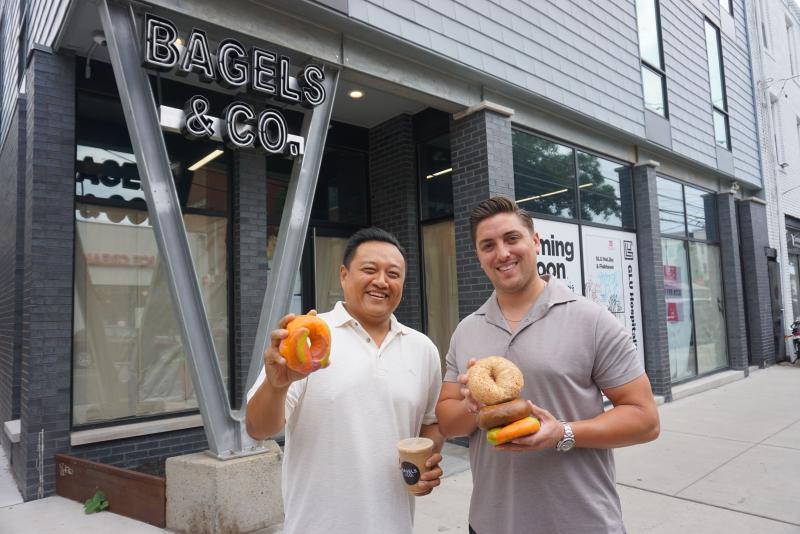
(Photo: Courtesy of Glu Hospitality)
* * *
Iverson Guo, Head Chef/Owner of Karma Asian Fusion:
“As far as trends go, guests are looking for an experience – not just eating food outside of their home. We try to provide a total experience at Karma Asian Fusion, so guests are inclined to return time and time again. Innovative cocktails and creative, aesthetically attractive dishes from other cultures catch guests’ attention, which is why Asian cuisine is so popular. It offers many specialized cuisines, all set under one umbrella.“The biggest issues in the industry currently are the costs of goods, as well as balancing guest expectations with an exceptional experience that is perceived as value not simply a splurge.”
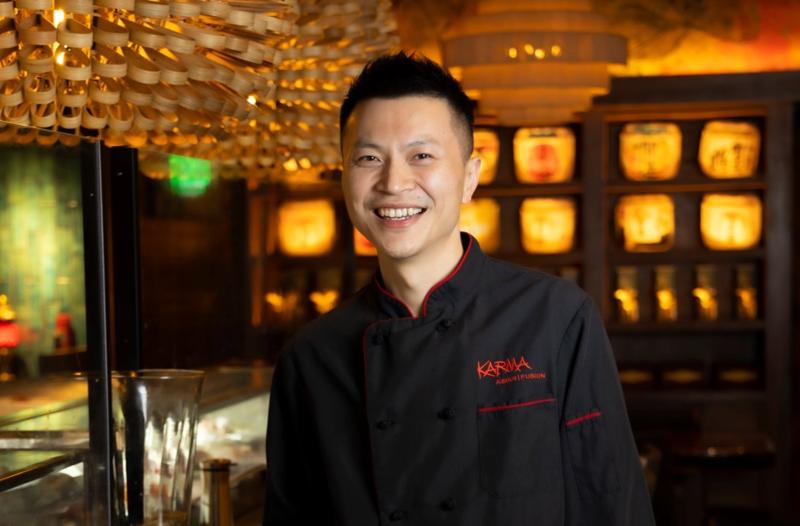
(Photo: Courtesy of Karma Asian Fusion)
* * *
Brian Poe, Chef and Owner of The Tip Tap Room and Parish Café:
“We need to promote the restaurants that are refocusing their energies on hospitality. Too many people are still getting press complaining about the cost of goods sold, the guests being super rude post-pandemic, etc. We need to remember that their life hasn't exactly been peaches and cream the past few years either. We are beyond grateful to have a restaurant – to be open and to be able to serve one another and our guests.
“Our guests are fully aware of the high costs that have been paid by all to be back in business – so the trend I'm seeing is the restaurants that are being kind are reaping the benefits of bringing hospitality back. The ones that are constantly screaming on social media about being short staffed and with the signs in the door that tell you the customer to be nice because we're short staffed need to stop it – the customer is there because they missed you. So, please stop the incessant complaint memes of social media and start promoting gratitude again.
“Versatility is what's capturing the attention of our purveyors. We've positioned our menu at The Tip Tap Room & Parish Cafe to be there for all budgets’ price point. Choosing from the burger to the high-end bison ribeye, or the regular pilsner or lager, to the high end and rare beers from Tip Tap General Manager Nick Giannotti's collection of Rare Beers called Nick's Stash. If your budget doesn't include dinner out – then you can purchase the same cuts of meat, fish, protein and farm fresh vegetables next door at the Crane River Cheese Club, and we can guide you on how to prepare your own meal tonight. If your office is back to work on Wednesdays and you want to cater in – we can do that from all three locations and/or set up a larger reservation so that you can all enjoy seeing one another again. So, basically, I think a little versatility from the restaurants goes a long way these days.
“I think balancing the pay scale for our employees is still a major issue. We run higher labor costs than I've ever seen in my career. The challenge is the margins are indeed tighter and the employees we have absolutely deserve what they are getting paid. It's just finding your way through the maze of other expenses to land on a profitable finish line.”
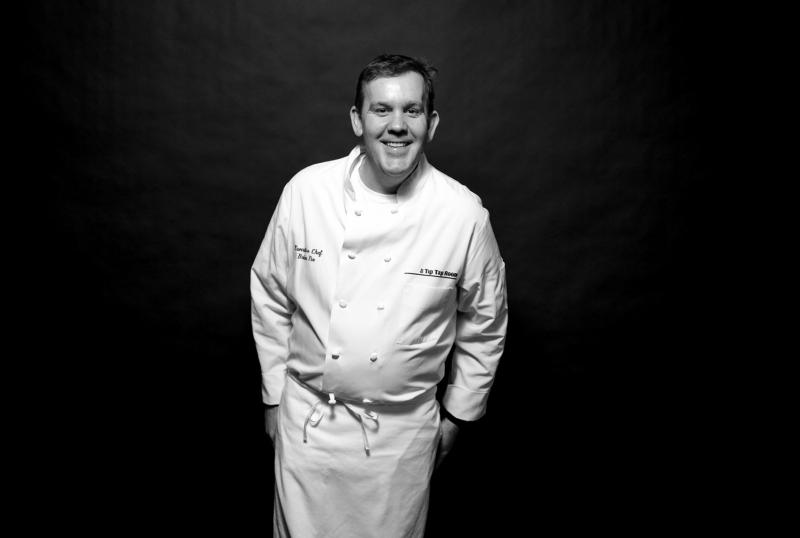
(Photo: Courtesy of The Tip Tap Room and Parish Cafe )
* * *
Stephen Ennamorati, Executive Chef, Pazza on Porter, from Boston Amici Group:
“As a chef of new restaurants, it is important for me to identify and pay attention to new trends and what is on the cutting edge of the restaurant industry. One of the biggest trends I am seeing is that restaurants are paying more attention to the aesthetics of the dish and the food being served. I see this as both a trend and an issue with the industry today.
“Restaurants are focusing on their plates being photogenic. Molecular gastronomy and the use of science in cooking has become an eye-catching, picture-worthy trend in the restaurant industry over the past 20 years.
“I think with chefs worrying about the aesthetics of the plate and how it photographs has taken the consumer away from the simple pleasures of enjoying their food and dining out.
“Food preparation and plating is now focused on the guest taking out their phone more than it is on if they will enjoy what they are eating and finish what is on the plate. The time it takes to photograph the food actually changes the dining experience.
“The goal is to have the guest love the presentation of their food as well as the taste of their food; I aim to have a plate that is both aesthetically appealing and flavorful.
“In conclusion, I feel the industry’s hottest trend could be one of its biggest issues. We want our guests to enjoy their food and to comeback and dine with us again and again. While we appreciate the social media posts of our restaurant and its food, we focus on the guest experience. If our guests take photos or videos and post them on Instagram and Tik Tok, I consider that a wonderful bonus, but I don’t create our menu with that in mind.”
* * *
Mike Lenard, Executive Chef and CEO at TaKorean:
"The American diner is increasingly interested in branching out and trying new flavors. In research done for the most recent QSR magazine white paper, the No. 1 growing food type is Korean inspired or based ingredients and spices. At TaKorean, we're serving up Korean-inspired flavors with a Latin-American twist in an approachable format. Delicious will always win in the long run.
“There are two primary issues facing restaurants right now; food cost increases and labor cost increases. As a chef, you need to produce profits on a plate by plate basis and you need a team to execute your vision.
“TaKorean has found long standing success creating a system that is streamlined and simple to execute, limited administrative burden, and compensating team members above market wages. As a result, we have not been faced with any staffing crisis at all. When you start viewing your labor force as an asset that increases value the more loyalty and training you put into them and the longer you work with them – you've cracked the code. Many restaurant and retail businesses, unfortunately, view their labor as a resource to be extracted, but that's wrong for the team and it's wrong for the business.”
* * *
Robert Pugh, Vice President of Food and Beverage, Bolay Fresh Bold Kitchen:
“Some of the most important trends and issues in the restaurant industry right now are what restaurants are doing to make their work environments better for their teams. Restaurants are very team oriented, and when the team feels taken care of, believes in what they do and feels they are growing, then all parties are in a place to succeed.
“The use of global flavors and ingredients is having some of the biggest impact on current trends. Items like elote [Mexican street corn], kimchi, ramen and ghee are popping up on menus and grocery stores more than ever. This is exciting because it opens a door for more people to experience different cultures than they have ever before.
“Great service and high-quality food that is approachable [is key]. For a long time, fine dining was the only arena to experience both, and a shift seems to be occurring. This is what we feel sets us apart at Bolay, as we strive to deliver on both great service and high-quality food in the fast casual setting.
“Guests are becoming more and more concerned about what they are putting into their bodies, which is making restaurants think twice about the products they use. Hopefully, this will lead to a better understanding about where our food comes from which could help guests have a more nutritious diet.”
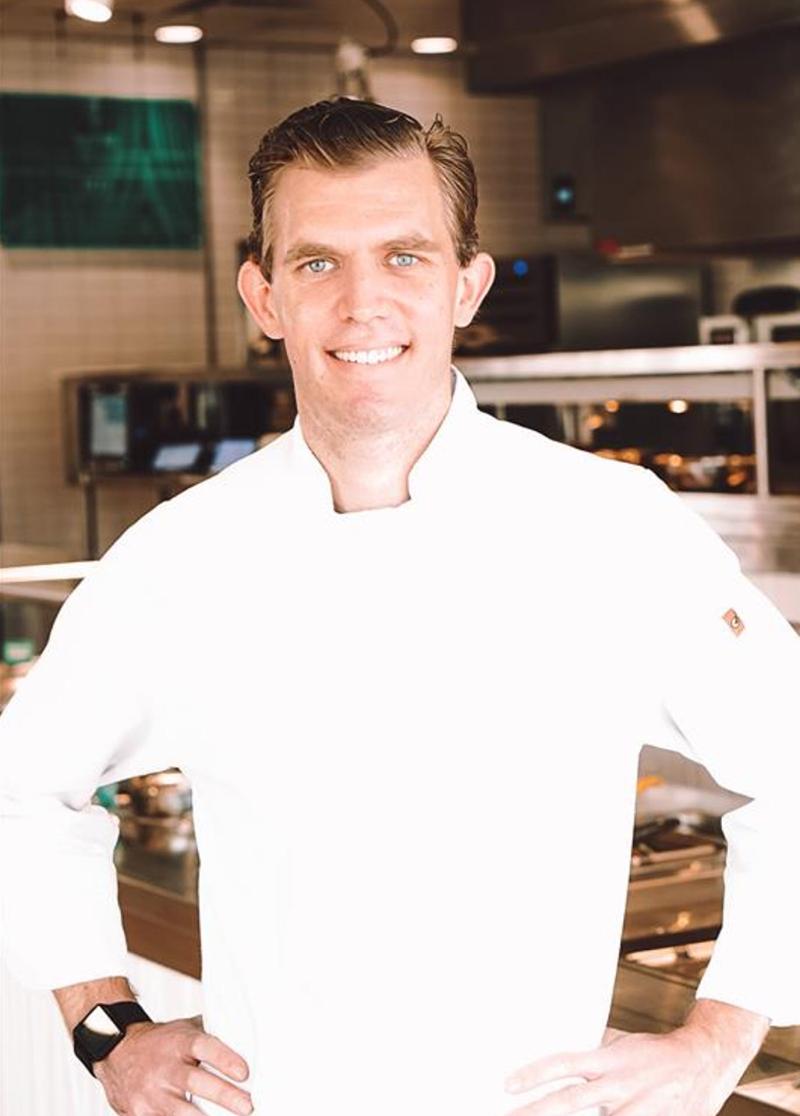
(Photo: Courtesy of Bolay Fresh Bold Kitchen)
* * *
Daniel Hlusak, Culinary Director of Titan Hospitality Group:
“Time is one of the most valuable resources in the industry now more than ever before. Any seconds, minutes and hours we can give back to our staff to service various areas in the restaurant is vital. For example, we optimize ingredient preparation time by purchasing things such as pre-peeled and cut carrots versus purchasing the whole vegetable.
“More than 30 percent of pre-pandemic restaurant workers have moved into different fields, so even when supply chains are running smoothly – and this is exceedingly rare – finding the personnel to lovingly craft and deliver product and service remains elusive. At our restaurants, we have evolved our training processes to allow more flexibility in hiring people with limited experience. The typical training period of seven days was increased to two to three weeks in Titan Hospitality Group restaurants.
“For the short time people choose to spend with us, it is our privilege and pleasure to provide a seamless experience in which our guests are the star players, allowing them to feel as if they and only they exist in this world. Providing that level of service with frequently inexperienced or under-experienced staff returns to the core principle of service, this time to our employees. The focus on mentoring and encouragement is paramount and leaves me reminiscent of Christmas Eve with my grandmother, her holding my hand as I stir the peppers that formed her cacciatore. The smell of the paprika, the caramelized onions, still transport me back to that small brick house in Lyndhurst, Ohio.
“Sourcing ingredients locally is not only good for the surrounding community, but it also gives me a bit more control of my menus by knowing exactly where from and what produce I can expect in shipments each day. With fewer physical barriers and shipping checkpoints, knowing that local ingredients are readily available gives me peace of mind as I develop menus and specials.”
* * *
Executive Sous Chef Julio Acosta of Grand Hyatt Baha Mar’s Restaurant Cinko:
“Since the past few years, a unique type of cuisine has caught the attention of many people who had the opportunity to visit Lima, Peru, home of a few of the best restaurants in the world – Nikkei cuisine.
“Nikkei cuisine was a natural and organic process that merged Japanese and Peruvian cuisine that started with the arrival of the first Japanese immigrants to South America and particularly to Peru during the previous century.
“During the ‘70s, a handful of Japanese cooks came to Lima to open the very first Japanese restaurants in the region. One of those Japanese cooks was Nobu Matsuhisa, who came to Lima in 1973 to open Matusue.
“Since then, Nikkei cuisine has become a very exciting and vibrant cuisine that has spread out all over the world, including major cities like N.Y.C., Barcelona, Miami, Paris, London and, of course, Lima, where the best Nikkei restaurant in the world is located: Maido.”
* * *
Jason Miller, Executive Chef at Front Burner, the Restaurant Management Company for Melting Pot
“Labor struggles continue [lack of available labor], rising operating, particularly costs of goods. Supply chain is still an issue with companies discontinuing products and large providers limiting the types of products they carry has caused more direct ship ordering to occur as well as many restaurants are limiting what’s on their menus.
“Delivery is here to stay. Online ordering is a must have for most concepts. Fast casual restaurants will surge – meaning smaller footprints, smaller menus, and focusing on value-oriented ingredients. Pick up and curbside to-go.
“Plant based and CBD infused products are becoming more mainstream. Robotics and automation will continue to permeate our industry more and more each year.”
* * *
Jose Garces, Chef at Garces Group:
“As a hospitality group, we’re always assessing our concepts and business ventures to understand and adapt according to what we’re experiencing and what we anticipate in the future. We have been seeing changes in frequency for occasion dining, prompting the shift to concepts that cater to habitual dining. We have three exciting things happening this fall that focus more on habitual dining – the national franchising of Buena Onda, the debut of Garces Eats, and the reinvention of Garces Trading Company. Each fits in with the larger trend of adapting to diners and their change habits, as we head back to work and life this fall.
“Diners want to experience food in new ways – and we want to evolve to meet that demand. This also includes more casual concepts, the addition of marketplaces to our concepts, adding wine shops to our offerings, and other things for guests that are above and beyond the usual.
“Having the opportunity to bring my Garces Eats concept to the Club Level for Wells Fargo Center has been hugely exciting for me. At its core, Garces Eats is intended as an extension of my personal test kitchen and studio, where I will be bringing the best of handheld and bowl based foods from around the world to one of the most dynamic event venues in the country.”
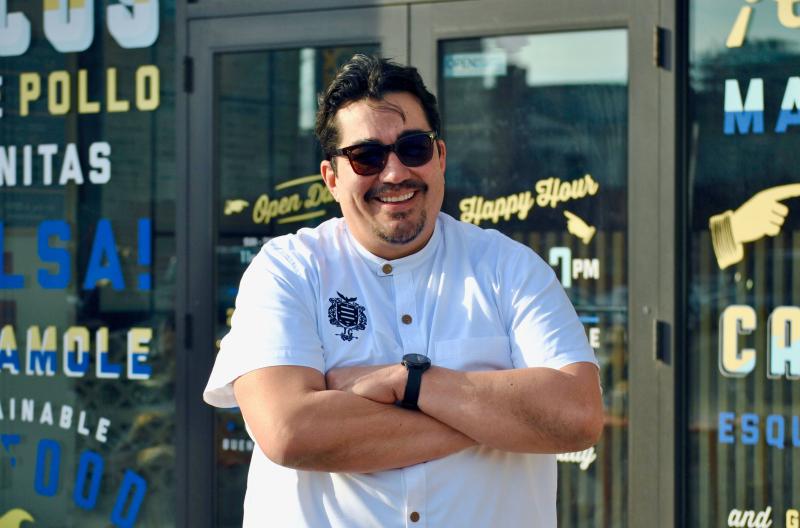
(Photo: Courtesy of Garces Group)
* * *
Erin Flynn Jay is a reporter and publicist based in Philadelphia. She’s a Bar & Restaurant and World Tea News contributor, and some of her other writing credits include Next Avenue and Woman’s World, among many others.
Plan to Attend or Participate in
Bar & Restaurant Expo, March 27-29, 2023
To learn about the latest trends, issues and hot topics, and to experience and taste the best products within the bar, restaurant and hospitality industry, plan to attend Bar & Restaurant Expo, March 27-29, 2023 in Las Vegas. Visit BarandRestaurantExpo.com.
To book your sponsorship or exhibit space at Bar & Restaurant Expo, contact:
Veronica Gonnello
(for companies A to G)
e: [email protected]
p: 212-895-8244
Tim Schultz
(for companies H to Q)
e: [email protected]
p: (917) 258-8589
Fadi Alsayegh
(for companies R to Z)
e: [email protected]
p: 917-258-5174
Also, be sure to follow Bar & Restaurant on Facebook and Instagram for all the latest industry news and trends.
